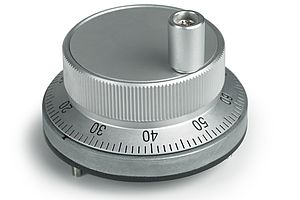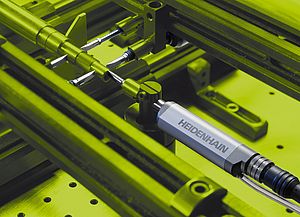With its new generation of inductive absolute rotary encoders, HEIDENHAIN has expanded the capabilities of its ECI/EBI 100 series. The preferred area of application covers demanding tasks, e.g. for hollow shaft motors and torque motors as well as for the limited installation space in modern machine designs. For these applications, the ECI 119 not only offers a singleturn resolution of 19 bits (524 288 positions/revolution), but also a compact design and functional reserves against contamination and the influences of mechanical loading.
The special highlight of the expanded series is the EBI 135. Its battery-buffered revolution counter (16 bits) permits a total resolution of 35 bits in comparison to the 19 bits of the ECI 119 singleturn encoder. Its inductive scanning makes it a particularly sturdy encoder. Under normal operating conditions and an appropriately designed external battery power supply, a battery life of approx. 10 years is achievable. In addition, an optional external sensor can be connected and evaluated. The temperature value is transmitted over the EnDat 2.2 protocol.
The inductive absolute rotary encoders of the ECI/EBI 100 series are now available with hollow shaft diameters of 30 mm, 38 mm or 50 mm. The hollow shaft provides space for electric cables, shafts or supply lines. This can dramatically reduce design cost for many machine types. The electrical connection technology can be optimized with the new flange recess. In particular, where space is limited it permits electrical connection inside the encoder contour.
A further advantage of the ECI/EBI 100 inductive absolute rotary encoders is their design without ball bearings. This prevents additional friction torque and the resulting self-heating. At the same time, shaft currents can no longer damage ball bearings as so often occurs with electric motors. Moreover, the rotary encoders are suitable for a high operating temperature range up to +115 °C and therefore permit efficient motor design. An expanded supply voltage range simplifies design of the subsequent electronics and the permissible connecting cable lengths.


























